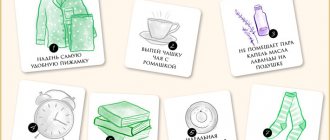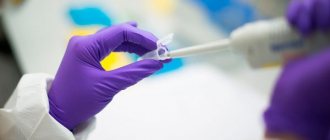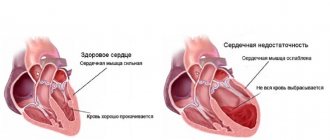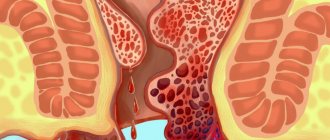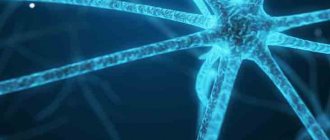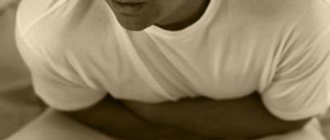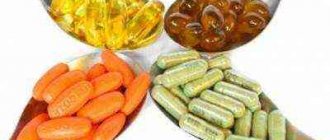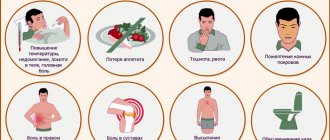Causes of angina development
At the initial stage of development of coronary insufficiency, angina appears quite rarely, provoked by severe physical exertion or stress. But over time, the frequency of attacks begins to increase as their duration increases. When the disease becomes severe, pain occurs even at rest.
The danger of the disease is that it can provoke the development of myocardial infarction. Therefore, its symptoms should never be ignored.
Before you begin treating angina with the most effective traditional methods, it is necessary to understand the mechanisms of development of the disease. This pathology can manifest itself for two types of reasons:
- immutable, which cannot be eliminated;
- modifiable, which can be eliminated, avoiding the development of the disease.
The unchangeable factors are:
- Age. If previously it was believed that people aged 50-60 years were at risk for this disease, today the pathology is detected in people under forty years of age. If constant stressful situations and nervous tension occur, ischemia and subsequent infarction of the heart muscle can develop in twenty-year-old people.
- Hereditary. If close relatives of the patient suffered from this disease, then it is highly likely that he will develop it too. Angina pectoris very often occurs as a result of previous chronic diseases - these are heart defects, rapid heartbeat, and heart attack.
Variable causes of the disease are as follows:
- Lack of normal physical activity. Due to numerous tests, scientists were able to establish that the more training the myocardium endures, the less likely it is to develop this disease.
- Poor nutrition, namely, consumption of smoked, salted, fried, and other heavy foods, not only worsens the functionality of the cardiovascular and digestive systems, but also negatively affects the functioning of the entire body as a whole.
- Alcohol and smoking abuse. If you have heart problems, you need to give up these bad habits.
- Obesity. If you have a small amount of excess weight, a balanced diet and exercise will help you correct it. If the patient’s weight significantly exceeds the norm, then complex treatment methods should be used to prevent angina pectoris.
- Hypertension. The development of the disease has an extremely negative impact on the condition of the blood vessels. Prevention of the disease involves a balanced diet, increased physical activity, and quitting smoking and alcohol. All this is accompanied by appropriate drug treatment.
- Stress. Scientists believe that happy, optimistic people are least likely to develop angina. Those at risk include people with a depressive character and those experiencing serious emotional upheaval and nervous tension.
- Chronic diseases. Some diseases can negatively affect the cardiovascular system. The development of angina pectoris can occur as a result of diabetes mellitus.
To prevent the disease, it is very important to maintain a healthy lifestyle. We are talking about moderate physical activity, diet, sleep patterns and giving up bad habits.
What is angina
One of the most common pathologies of the cardiovascular system is angina.
It is associated with a discrepancy between oxygen delivery and myocardial needs for it. Angina pectoris is a form of coronary heart disease (CHD). With acute lack of oxygen in the heart muscle, severe chest pain occurs. Literally, angina is translated from Greek as “tightness in the heart.” On a note!
Because of the specific symptoms, the pathology is called “angina pectoris” or coronary heart disease.
Cardiologists distinguish between angina pectoris and angina at rest. In the first case, unpleasant symptoms arise against the background of physical fatigue or emotional stress. In the second, pain and tightness in the chest can occur even at night. People suffering from this pathology often feel pain in the side and upper torso when waking up. These sensations can be so strong that it becomes difficult to get out of bed.
Symptoms of the disease and factors that cause pain
Angina pectoris is manifested by discomfort and pain in the chest. Most often the pain is of a squeezing or pressing nature. They are localized inside the chest and can radiate to the neck, left side of the lower jaw or arm. Pain occurs suddenly, lasting from several minutes to an hour. This may be accompanied by the appearance of cold sweat on the patient's forehead.
The manifestation of the disease most often occurs due to stress or physical strain. The main factors provoking pain are:
- physical activity (running or brisk walking, lifting weights, climbing stairs, etc.);
- stress;
- hypothermia;
- high blood pressure;
- binge eating.
Most often, the pain goes away within 3-5 minutes if the person is at rest. Nitroglycerin allows you to quickly relieve pain.
Causes and symptoms of angina pectoris
Chest pain is a reaction of myocardial cells to a lack of oxygen transported by blood. Reduced blood supply can occur for various reasons:
- due to stenosis (narrowing of the lumen) of the coronary arteries, caused by the appearance and subsequent growth of atherosclerotic plaques on the inner walls of the vessels;
- for hypertension;
- as a result of myocardial hypertrophy (increase in the linear dimensions of the heart);
- when arrhythmias occur (disorders of myocardial innervation);
- Increased physical overload and frequent stress can lead to a lack of oxygen.
Reliable risk factors that provoke attacks of chest pain are bad habits, abuse of fatty foods, age-related changes in blood vessels, and permanent fatigue.
Angina pectoris as a pathology is classified according to two criteria:
- stable/unstable;
- angina pectoris at rest/stress.
Regardless of the form, the main symptom of the disease is the occurrence of pain or significant discomfort in the chest area. Subsequently, pain can radiate from the myocardium to nearby areas: neck, arms, shoulder blades, lower jaw. The nature of the pain can be different - burning, squeezing, aching, pressing. Sometimes the patient complains of a sensation of a foreign body behind the sternum, in such cases he does not consider it pain. Secondary signs of angina pectoris include an increase in blood pressure, shortness of breath, profuse sweating, and noticeable interruptions in listening to the pulse. Angina pectoris is often accompanied by the development of panic attacks, nausea, and dizziness.
At the very first pain attacks, it is necessary to place a Nitroglycerin tablet under the tongue, taking all measures to limit the patient from exposure to provoking factors, and if the pain does not go away within 20 minutes, call emergency help, since this condition threatens to develop into a myocardial infarction.
The use of honey for angina pectoris
If you are interested in how to treat angina pectoris at home, you should pay attention to honey-based recipes. This substance is an important source of microelements that have a positive effect on the functioning of the heart muscle. This product helps improve coronary blood supply, and the vitamin C it contains is responsible for the elasticity of blood vessels. One of the main components of honey is potassium, which normalizes heart rate.
A number of medicines are made from honey to treat diseases of this organ. One of the most famous is “Todikamp”, which contains honey extract and walnuts.
The most common recipe for treating illness with honey involves the following steps:
- 1 kg of lemons are ground through a meat grinder without removing the zest.
- 10 medium-sized heads of garlic are peeled and crushed.
- Add a kilogram of honey to the resulting mixture.
- The composition is mixed well and sent to a dark place for a week.
The medication should be taken one teaspoon at a time, 4 times a day. Before swallowing, keep the mixture in your mouth for a couple of minutes. You should be treated in this way for two months.
If angina pectoris does not cause severe pain, then a good way to combat the disease is a medicine based on honey with grated horseradish. Containing a large number of essential oils and glycosides, the latter helps improve blood circulation, dilates blood vessels and lowers blood pressure. The cooking method is as follows:
- Grate horseradish on a fine grater.
- One part of the plant should contain 4 parts of honey.
- The product does not require infusion and can be used immediately after preparation. Take a teaspoon twice a day for four weeks.
Any heart pathology can be cured with a remedy based on honey, lemon and dried fruits. With long-term use, heart rate and blood pressure normalize, and immunity improves. It is very simple to prepare the medicine at home:
- Grind raisins, prunes, dried apricots and walnuts (200 g each) in a blender.
- Add 200 ml of honey to the resulting mass.
- Grind a medium lemon along with the zest, after removing the seeds. You can also simply squeeze lemon juice into a mixture of dried fruits and honey. Take a tablespoon before meals three times a day.
No less effective is combining honey with aloe. This plant acts as a natural biostimulant, which can effectively eliminate ischemia in cardiac tissues, helping to increase the elasticity of blood vessels. The mixture is prepared as follows:
- 5 leaves are cut from the plant. It is necessary to select large lower leaves of a flower that is more than three years old.
- The leaves are peeled, after which the juice is squeezed out of them through cheesecloth.
- To the resulting juice you need to add 500 g of honey and 2 chopped lemons.
- The product must be placed in the refrigerator for three hours. Take a tablespoon three times a day an hour before meals. The intake is carried out for a month, then the same period is a break with the use of another folk remedy. The course of treatment is one year.
Herbal infusions
A competent combination of medicinal herbs can cure almost any ailment. Herbal preparations are also used in the treatment of angina pectoris with folk remedies. The following traditional methods are highly effective in treating the disease:
- Tricolor violet flowers are brewed in the following proportion: a teaspoon per 250 g of water. This remedy can be used during exacerbation of the disease.
- Sunflower decoction. Well-dried flowers are used for the product. A glass of petals is poured with a liter of water, then they should be boiled for five minutes. After this, the broth is infused for an hour, filtered and consumed three times a day, half a glass.
- A decoction of hawthorn inflorescences. Pour 2 tablespoons of flowers into a container and add a glass of water. After this, boil for 7 minutes, filter and consume 50 ml three times a day.
- Rosehip based product. Take 10 tablespoons of hawthorn and 5 tablespoons of rose hips. The berries are mixed and crushed. This mixture is poured into 2 liters of boiling water. Next, the container is wrapped and infused for 24 hours in a warm place, then filtered. Drink 200 ml infusion three times a day before meals. This remedy can be used in the fight against all heart ailments.
- Remedy made from cornflower and mustard. Pour a teaspoon of mustard powder and two tablespoons of cornflower herb into a container. Mix well and pour a glass of boiling water. Next, the product is infused for two hours and filtered. You should take a tablespoon three times a day.
- Field toad and mustard. Mix 2 tablespoons of toad grass with mustard seed powder (1 teaspoon). Pour the mixture with two glasses of water, then boil for 30 minutes and immediately filter. A tablespoon of decoction should be taken 6 times a day.
- St. John's wort infusion. Take two tablespoons of dry raw materials per glass of boiling water and leave for an hour. Filter and take a quarter glass three times a day.
- Motherwort infusion. Two teaspoons of dried herb are poured into 0.5 liters of boiling water, then you need to send the product to a dark place for 8 hours. Take 50 ml four times a day.
- Hawthorn infusion. For seven tablespoons of dry herb there are 7 glasses of hot water. The container is wrapped and placed in a warm place for a day. After this, the infusion should be filtered and taken a glass three times a day. The infusion retains its positive properties when stored in a cool and dark place.
Herbal decoctions
Recipes for decoctions of medicinal plants used in the treatment of angina pectoris:
- A decoction of valerian roots and dried hawthorn fruits is prepared by mixing both components in the same mass proportion. 80 grams of the mixture is poured with a liter of slightly cooled boiling water, and the infusion is kept for 20 - 24 hours. After straining, take the decoction three times a day during meals in a volume of 150 - 200 ml. The principle of action of the decoction for angina pectoris is based on the ability of valerian to provide a calming effect, while hawthorn dilates blood vessels, increasing the volume of blood flowing to the coronary vessels.
- Astragalus herb is a perennial plant that has the ability to dilate blood vessels, which has a beneficial effect on angina attacks and high blood pressure. The decoction is prepared in the standard way: pour 10 g of dry herb into 200 ml. boiling water, keep the resulting liquid in a water bath for about 20 minutes, then strain. Regularity of intake – 4 times a day, a tablespoon. The drug has a diuretic effect, which is useful in the presence of cardiovascular diseases, including ischemia and angina.
- Lovage root is known for its high content of potassium and essential oils, and these substances help normalize heart rhythm and improve blood supply to the myocardium (heart muscle). To prepare the composition, 10 g of root is boiled for 10 - 15 minutes, allowed to stand for 120 - 180 minutes and filtered. Dosage for the treatment of angina pectoris – 100 mg four times a day. facilities.
Tinctures
Treatment of angina pectoris with folk remedies cannot be done without the use of all kinds of tinctures. A mandatory component of such products is vodka or alcohol. By interacting with medicinal herbs, moderate doses of alcohol contribute to the expansion and strengthening of blood vessels, relieving spasms and restoring proper blood supply to the myocardium. The following recipes are most popular among people:
- Alcohol tincture of Adonis stems. Mix 50 g of dried adonis with the same amount of three-leaf leaves. The mixture is poured with a liter of vodka, after which it must be infused for three weeks. After filtration, a single dose is 25 drops diluted in 50 ml of water.
- Hawthorn tincture. 10 g of dried berries are poured with 100 ml of vodka. The product is infused for 14 days in a dark place. After straining, the tincture is taken in the same way as in the recipe described above.
- Tincture based on elecampane root. 30 g of dry raw material is poured with 0.5 liters of vodka and infused for two weeks. The product is filtered and completely ready for use. The average dose is 40 drops three times a day.
Causes of pathology
Angina pectoris most often occurs due to narrowing of the lumen of the coronary arteries, which occurs against the background of pathological processes.
The artery contracts, causing blood flow to slow down or even stop for a moment. The heart experiences oxygen starvation, which causes severe pain. Arterial spasm can occur against the background of atherosclerosis, which is sometimes combined with thrombosis. The cause may also be pathology of the inner wall of the vessel, but this is much less common. Angina pectoris is caused by an unhealthy lifestyle and heavy physical activity. Pathology is also provoked by:
- eating large amounts of food high in cholesterol;
- alcohol and smoking abuse;
- obesity;
- diabetes;
- physical inactivity;
- hypertension.
The pathology is more common in men over 45 years of age and in women over 55 years of age. A family history of atherosclerosis significantly increases the risk. You shouldn't ignore pain in your heart. IHD ranks high on the list of causes of early mortality.
Combined folk recipes
Effective treatment of angina at home involves the use of remedies that combine the preparation methods described above. The most popular among them are:
- 500 g of honey is poured into 0.5 liters of vodka and heated on the stove until a homogeneous mass is obtained. The mixture is then cooled. At the same time, you need to boil a liter of water, after which it is poured with a mixture of knotweed herbs, valerian root, marsh grass, chamomile and motherwort (you need to take a tablespoon of each herb). Leave for exactly one hour, after which the previously prepared mixture is poured into the infusion and mixed. The final product must be kept in a dark place for a week. Take a tablespoon twice a day.
- Squeeze the juice from the garlic head (large), add a glass of Cahors and half a teaspoon of salt. Take a tablespoon at night. The course of treatment is a month. Over the course of a year, you need to carry out two courses of treatment for angina pectoris at home.
The high effectiveness of traditional methods in the treatment of heart diseases has been proven more than once in practice. This is evidenced by numerous positive reviews about the treatment of angina pectoris with folk remedies. But the best result is ensured if the use of infusions, tinctures and herbal preparations is combined with taking tablets prescribed by a specialist.
Before treating angina pectoris with folk remedies, you need to have an accurate diagnosis. Therefore, you should not self-medicate - in case of any interruptions in the functioning of the heart, you must contact a specialist who will diagnose and determine the further course of treatment. Only in this way can you finally get rid of the disease.
Treatment of angina pectoris with folk remedies
The patient should turn to alternative medicine if the ambulance requires waiting too long. Currently, traditional methods of treatment are widely used, which effectively help cope with angina attacks. When an attack occurs, you should follow a few simple rules:
- it is necessary to monitor your physical condition;
- remain calm, avoid any physical activity;
- the patient is in a sitting position, legs down;
- instead of taking medicine, experts recommend eating a small clove of garlic; it must be swallowed completely without chewing;
- To relieve pain, mustard plaster should be placed in the chest area. This method helps increase blood flow to the affected organ, eliminating ischemia. And, as a result: the patient’s pain will subside;
- the patient needs to rub fir oil into the chest area. To do this, place about 15 drops of oil on your hand and slowly rub clockwise. This method helps reduce pain. At the same time, you can take 6 drops of oil per teaspoon of sugar;
- Bed rest is required.
Angina pectoris should be treated with folk remedies only in combination with medications. And also regularly consult a doctor and receive standard treatment. Treatment with folk remedies can be perceived as effective prevention.
Alternative medicine involves a long course of therapy. Any treatment must be carried out in accordance with all doctor’s recommendations.
The doctor's consultation
In this case, calf liver should be present in the patient’s daily menu.
Experts recommend combining various decoctions and honey. To do this, you need to mix 0.5 liters of honey with the same amount of vodka and heat it on the stove. Bring to a homogeneous mass. Then let the mixture cool.
Then boil water (a liter of clean water), mix a mixture of powder: valerian root, swamp sushita, chamomile and motherwort. Let it brew for about an hour, then mix the infusion with the already prepared mixture of alcohol and honey.
Leave for about a week in a cool place. The first week, use a teaspoon twice a day. The subsequent course is increased by a tablespoon. The course of treatment must be long: more than a year. Then a break of about 10 days.
Non-traditional remedies should be selected based on the personal characteristics of the body. If the patient is prone to allergic reactions, then treatment of angina with traditional methods, even if the most effective ones, should be under the supervision of a specialist.
It is impossible to cure angina with folk remedies alone. Treatment of angina pectoris at home should be carried out only on the recommendation of a doctor.
Take five heads (not cloves) of garlic, one liter of honey and ten lemons. Everything needs to be cleaned and the juice squeezed out of the lemons. The juice should be poured into honey, crush the peeled garlic and put it there. Leave the mixture for seven days in a sealed container in a dark and cool place.
You need to take the medicine every morning on an empty stomach, two tablespoons once a day. 1-2 minutes should pass between taking spoons, do not rush, slowly dissolve the honey in your mouth.
The course of treatment for angina pectoris should be continued until all the medicine has been used.
One woman fell ill with angina and went to the doctor. He prescribed her pills, which the woman took for quite a long time, after which she could not come to her senses. But it would have been nothing if these pills had helped her, but that didn’t happen.
And so a friend advised her a fairly simple treatment. If you have angina, you just need to eat the peel of a whole lemon before every meal. Just one week will pass and you will be surprised how much easier it will become for you. You should also adhere to a certain diet: do not eat anything fried, eat only liquids, for example, soups.
Do you have angina pectoris? Then your treatment is quite simple. You will need three to five aloe leaves, but the plant must be at least three years old. Just squeeze the juice out of the leaves. You will need a jar in which you will place the aloe juice. Also add the juice of a couple of lemons and half a kilogram of honey to the jar. Close the jar tightly with the lid. Place the jar in the refrigerator on the bottom shelf.
It is necessary to consume the composition one tablespoon before meals, about one hour. And so you should be treated for a year, taking breaks of one month. You will get approximately four courses of treatment.
You will need ten lemons, garlic, honey. You need to squeeze the juice out of 10 lemons, chop 5 garlic heads (not cloves!), and place in a glass jar. Then you need to add 1 liter of honey to the jar and mix everything thoroughly. Leave the mixture for one week in a cool, dark place, but do not put this jar in the refrigerator. It should infuse for seven days, and do not forget to stir the contents of the jar at least occasionally.
Directions for use: Before meals, you need to dissolve 3-4 teaspoons of this mixture in your mouth, 1-2 times a day. Once the jar is half empty, you will feel much better.
How to strengthen your heart
You can cure angina pectoris with the following folk remedy. which consists of two parts. To prepare the first part, take half a kilogram of May honey and half a liter of vodka. The mixture is mixed and heated on the stove until smooth.
For the second part, take one liter of settled water, you need to boil it. Take one teaspoon each of motherwort, chamomile, marsh cudweed, knotweed, and valerian root. The herbs need to be poured with water that you boiled and allowed to brew for an hour, then strain and add to the first part. The medicine should still stand for a week.
During the first seven days, drink one teaspoon, for example, in the morning and evening. For the second seven days, drink one tablespoon, and so on until the end of the course of alternative treatment for angina pectoris. Treat for a year with breaks of ten days. You will get rid of atherosclerosis, hypertension, arrhythmia, angina pectoris, and you will feel good.
A fairly simple folk remedy - hawthorn tea - will help you cure angina.
For this you will need the hawthorn itself. It can be stored in the summer, collected, and then dried in a dark place. After this, a winter without angina pectoris is guaranteed. Just brew tea: for one liter of boiling water you will need four tablespoons of hawthorn. It is recommended to brew in a thermos, as much more useful substances will be preserved there.
There are many different methods of treating a disease such as angina pectoris with folk remedies. There are many different teas that can help you. For example, there was a case where peppermint tea helped with angina. In addition to this advantage, this tea has many more positive aspects - for example, it also helps with heart pain and lung diseases.
To prepare this tea, you will need to take four tablespoons of dry mint per liter of boiling water, after which the composition should be steeped for a couple of hours. You can also add valerian root to mint tea, it will have a calming effect on the entire body.
To relieve pain in the heart, place six drops of fir oil on your palm and rub it into the heart area. You will feel better after the first rub. To prevent angina attacks, it is recommended to rub 2-3 drops of fir oil every day. During an attack, you can drink cognac with sugar, but only twenty grams. This will relieve the pain.
Let's define a little what angina is. Over time or under certain influence of external factors, you experience a narrowing of blood vessels. These vessels are located close to the heart, that is, in the chest area. In this case, the patient experiences pain in the chest area, the pain seems to be pressing. This is the disease angina pectoris.
For example, angina pectoris can be cured with a tincture of berries and herbs such as hawthorn berries and valerian. Herbs should be mixed together in equal quantities; for example, you can mix them by weight. Also, to make the mixture even more effective, you can add rose hips to it, this will saturate the drink with vitamin C.
In order to properly brew the infusion, you need to grind all the ingredients, then place seven tablespoons in the jar in which you are going to brew. For these seven tablespoons you will need seven glasses of boiling water. Then the jar should be wrapped and left alone for one day.
As soon as the product is infused, it should be passed through a mesh, thereby clearing it of herbs. It is worth drinking a glass three times a day with meals. You should also adhere to a certain diet, for example, avoiding foods such as cakes and drinks such as coffee. Beef liver will be useful.
If you have suffered such an unpleasant illness as angina or arrhythmia, then you can be helped by fairly simple remedies that are sold in any pharmacy and are quite cheap.
You should buy tinctures of hawthorn, motherwort and valerian at the pharmacy. All these tinctures must be mixed together. The method of use is simple: take three teaspoons of the mixture in the morning before breakfast. After a couple of days, you can take the infusion not only in the morning, but also in the evening.
But if you want better treatment, then you will have to prepare the tinctures yourself. It's quite simple. For this you will need, in fact, three jars. Put an ingredient in each, then pour real medical alcohol into each jar. So, these jars should stand in a dark place for two weeks, after which each infusion should be passed through a mesh to remove the herbs. The infusion should be taken for thirty days, after which you need to take a break for ten days.
The most common manifestation of coronary heart disease is angina. In common parlance – “angina pectoris”. With this syndrome, sternal pain of a pinching nature is noted, which occurs due to narrowing of the blood vessels of the heart.
- The first way to overcome the symptoms of angina pectoris at home is based on a natural herbal remedy - hawthorn. It is known that numerous manufactured drugs are based on this component in the treatment of heart diseases.
